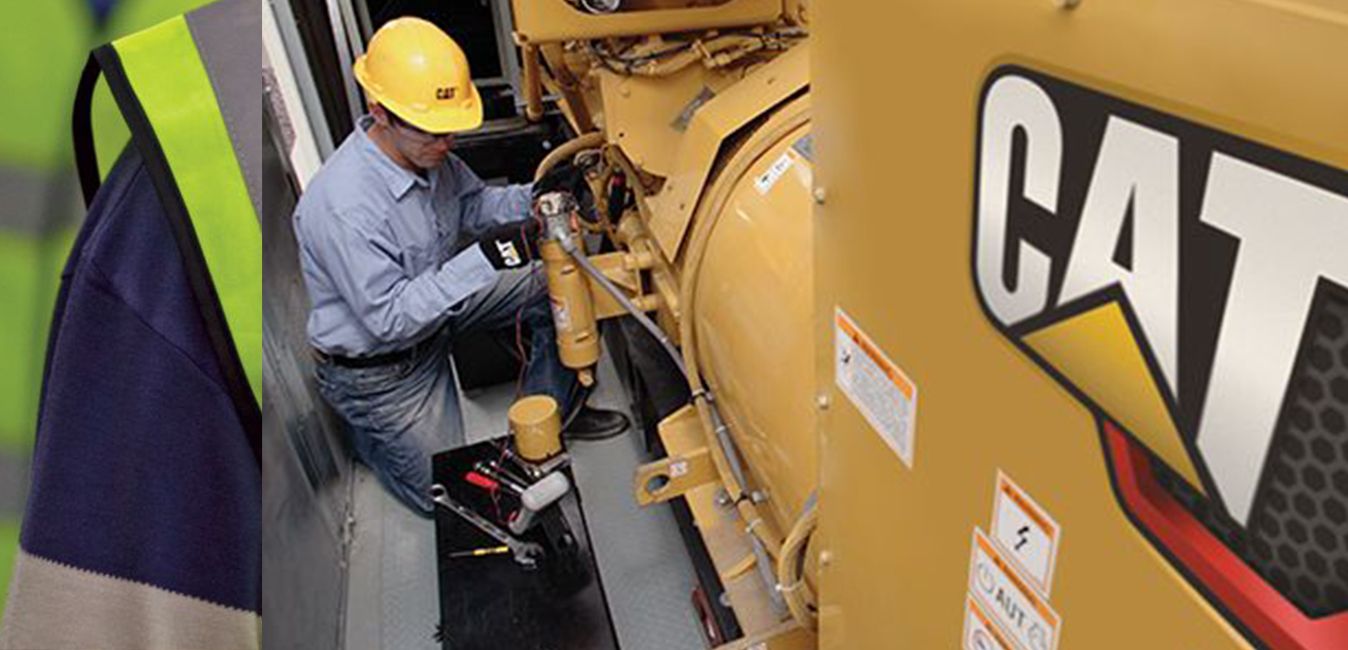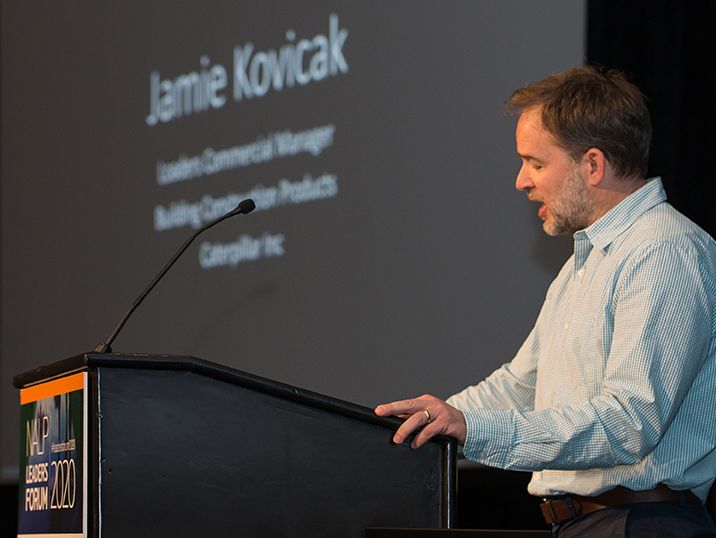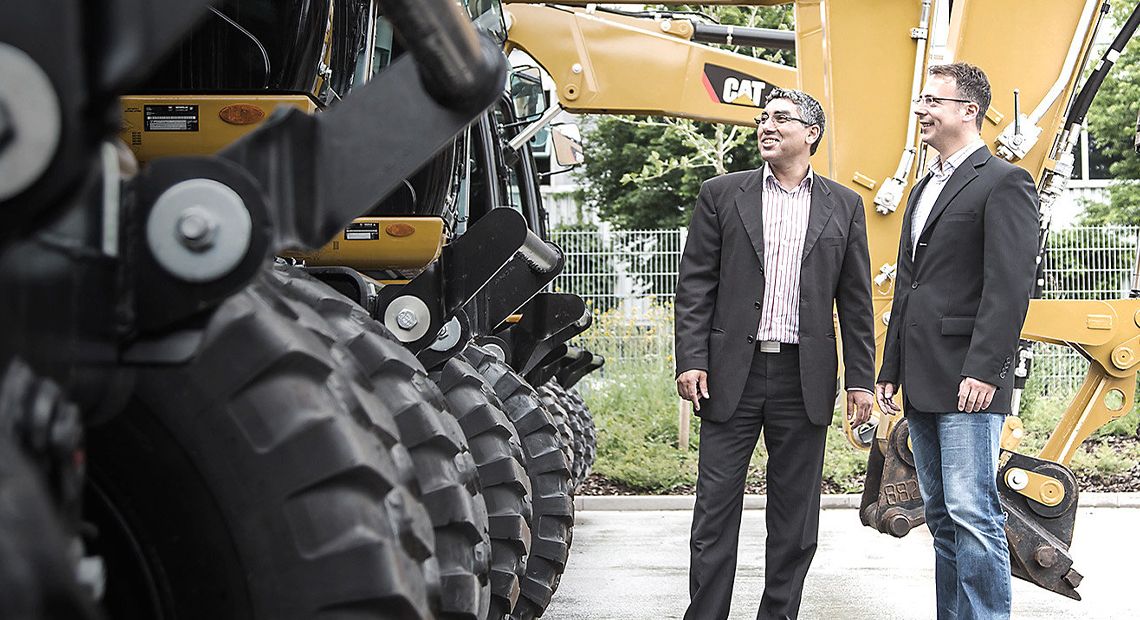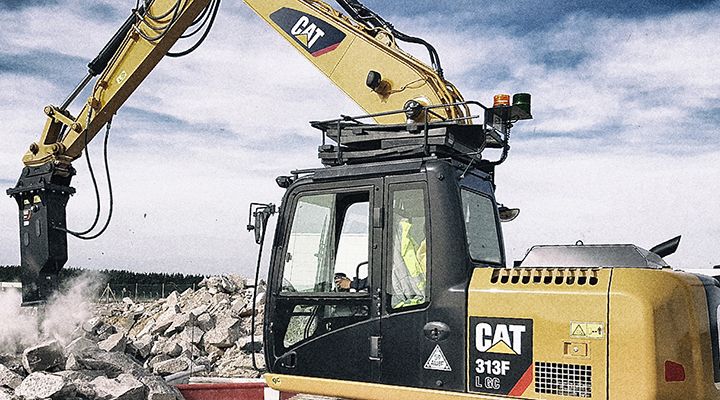

Sign In
Welcome! Sign In to personalize your Cat.com experience
If you already have an existing account with another Cat App, you can use the same account to sign in here
Register Now
One Account. All of Cat.
Your Caterpillar account is the single account you use to log in to select services and applications we offer. Shop for parts and machines online, manage your fleet, go mobile, and more.
Account Information
Site Settings
Security
A NEW WAY TO KEEP SCORE
Life Cycle Costing Drives Fleet Management Strategy
File cabinet contents are neatly labeled, equipment manuals perfectly shelved, and folders precisely stacked on the desk top in Scott Zielinski’s office. Machine performance records can be called up instantly on the computer of the manager of fleet and facilities for Lake County, Illinois.
Since he began the job in January of 2010, Zielinski has worked hard to bring that same order and attention to detail to management of the county’s 1,400-unit fleet.
Zielinski, who is responsible for maintenance of vehicles and machines in all departments, imple- mented a fleet strategy that provides a point value of zero to 15 to each unit.
QUICK FACTS
- Lake County is part of the Chicago metropolitan area, and has a population in excess of 700,000.
- Lake County crews are responsible for maintaining approximately 800 lane miles of county highway.
- The county’s 1,400-unit fleet includes 515 light-duty vehicles and 120 heavy machines and trucks. The remaining machines are light-duty equipment. “That includes chain saws and everything,” said Scott Zielinski, manager of fleet and facilities.
KNOW THE SCORE
Each vehicle is assigned a rating of up to five points for age, five points for mileage, and 10 points for LTD maintenance. The more points, the more costly the machine is to own and operate.
“This enables us to identify the vehicles with the highest maintenance costs, life to date, versus acquisition, and take them out of the fleet,” Zielinski said. “A 15-point vehicle is at the top of my list to be replaced in the upcoming budget year.”
Zielinski is now able to demonstrate that a 10-year-old machine with low points is less expen- sive to operate than a newer model with high maintenance costs, for example.
“For each vehicle, I track the parts cost, the labor costs, the outside repairs—the total cost of owning and operating that piece of equipment. I chart those numbers, and compare that to depreciation,” Zielinski said. “This enables me to compare one machine to another—like to like. Now we can see which units are more costly to own and operate utilizing specific metrics.”
Previously, Lake County had a policy of replacing light-duty equipment at seven years or 70,000 miles, and no replacement policy for heavy equipment.
“IT ALL GOES BACK TO LIFE CYCLE COSTING.”
“We want to target the vehicles that cost the most money to own and operate. A 7/70 program takes out either the oldest vehicles or the ones with the highest mileage. But those may not be the ones that cost you the most,” Zielinski said.
Life Cycle Costing (LCC)—using a machine’s initial purchase price, maintenance and operating costs, and resale value to determine the true cost of owning and operating equipment—drives Zielinski’s fleet strategy.
He began using LCC with the fleet’s 515 light-duty vehicles. “It’s a ramp-up program. We started with the equipment that has the biggest impact on our budget—the light-duty vehicles,” Zielinski said.
LCC is new to Lake County with regard to fleet replacement strategy, so Zielinski needed to update the database. “You have to have a good software program for fleet maintenance, and keep your records current,” Zielinski said.
EXPANDING THE BASE
A Cat® 950H Wheel Loader that the county acquired in February 2011 was the first piece of heavy equipment purchased using LCC. Machine specs were written to include maintenance costs and the guaranteed buyback price, which enabled the county to purchase a wheel loader based on actual owning and operating costs over the pro- jected life of the machine—not simply the pur- chase price.
Guaranteed buyback is a huge plus. “With the wheel loader, we were able to demonstrate that buyback value has significant cost implications,” Zielinski said. “When you have a company that stands behind its product like that, there’s a comfort level in investing the upfront purchase price of the machine.”
The machine loads salt and other materials into trucks, and clears trees and other debris from roadways.
Operators appreciate the machine’s excellent breakout force, and extended reach. The extended reach provides a range of mobility that enables county crews to load all trucks, with sidewalls at a variety of heights. “That separated it from the competition,” said Zielinski.
He anticipates keeping the machine for 10 years. “We’re getting away from buying something, keeping it for 40 years, and having that piece of equipment become dilapidated and incurring high maintenance costs,” Zielinski said.
Instead of keeping equipment until it no longer works and has no resale value other than scrap, the county plans to sell equipment while it still has some value and then apply the resale funds to the purchase of new machines.
“It all goes back to Life Cycle Costing. If we buy machines with extended warranties, and replace them on a regular basis, they will lower our fleet costs,” Zielinski said.
RELATED ARTICLES
You’re here to get ideas to grow your business. Read on for machine insights and expert tips and tricks to get more out of every job.
-
Building a Winning Company Culture
At this year’s NALP Leaders Forum, Jamie Kovicak, Caterpillar Loaders Commercial Manager, spoke about why a great company culture is key to building a successful business.
Learn More -
The Fast Track
Piggybacking onto national contract enables county to meet landfill needs.
Learn More -
Points Award System vs. Pure Bid
Why should you use a points award system rather than a traditional bidding process? We explore how this method can impact your business.
Learn More -
Looking to Add More Revenue? Add An Attachment
An often-overlooked way to put more work on the books is to take a look at the selection of attachments available for your equipment. The right attachment can create a whole new line of business or expand jobsite capabilities.
Learn More






